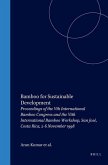This book tells the fascinating story of the policies and projects that resulted in doubling the size of British forests over the past eighty years and of the Acts and actors that played a role in this development. By the end of the century the area of forests in the United Kingdom (including Northern Ireland) had risen to over two and three quarter million hectares and covered eleven per cent of the land area. Three quarters of them consisted of plantations. Few other countries - Ireland and Denmark are two - have achieved a comparable change in the rural landscape in favour of forestry over as short a time. Furthermore, from being in a deplorable state by the end of the First World War, British forests are now well above the European average in terms of productivity (wood yield per hectare). At the same time they are being called upon to meet increasingly heavy social and environmental demands from a dense, largely urbanised society.








